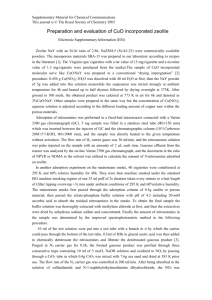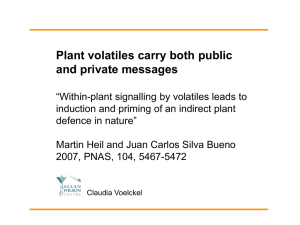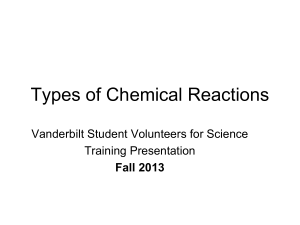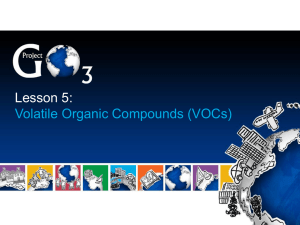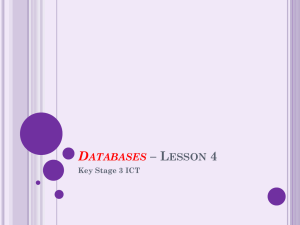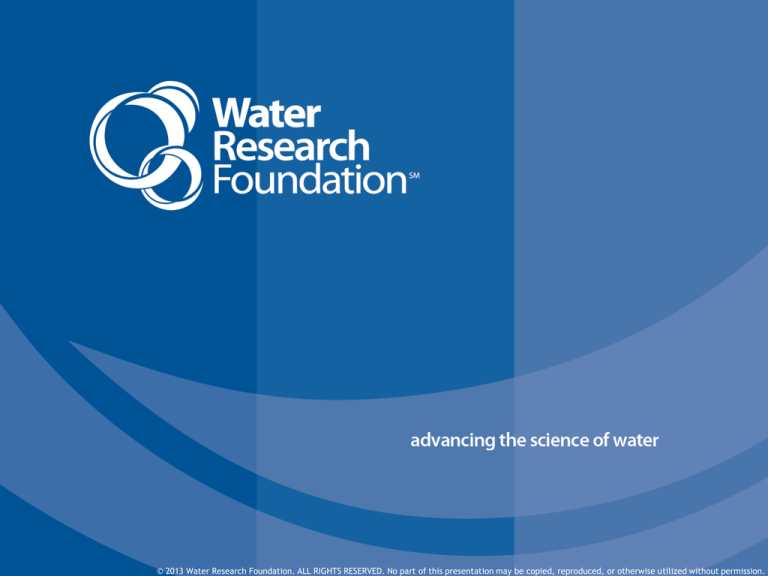
© 2013
Water Research
Foundation.
ALLwithout
RIGHTSpermission.
RESERVED.
© 2013 Water Research Foundation. ALL RIGHTS RESERVED. No part of this presentation may be copied,
reproduced,
or otherwise
utilized
NARUC Conference
Washington, DC
February 2013
© 2013
Water Research
Foundation.
ALLwithout
RIGHTSpermission.
RESERVED.
© 2013 Water Research Foundation. ALL RIGHTS RESERVED. No part of this presentation may be copied,
reproduced,
or otherwise
utilized
Overview
Lead-Copper Rule
Nitrogenous DBPs
Carcinogenic VOCs
Summary
© 2013 Water Research Foundation. ALL RIGHTS RESERVED.
Lead and Copper Rule
© 2013 Water Research Foundation. ALL RIGHTS RESERVED.
Long Term LCR Proposed Revisions
• Proposed rule available ~August 2013
• Potential changes to the rule
— Sample site collection criteria and sampling procedures for lead
and copper tap monitoring
— Corrosion control treatment and water quality parameter
monitoring requirements
— Lead service line replacement requirements
— Sampling in schools and child care facilities
— Consecutive system requirements
— Potentially outdated requirements, rule relevancy, and
simplicity for systems
© 2013 Water Research Foundation. ALL RIGHTS RESERVED.
Long Term LCR Proposed Revisions
• Potential changes to the rule (contd.)
— Require Tier 1 samples to be taken from lead service line rather
than 50% lead services and 50% copper solder
— Changes to lead service line replacement requirements and follow
up sampling
— Alternative in home sampling schemes
▪ Sample from lead service line, random daytime sample,
profile sampling
— If Action Level exceeded, system must re-optimize
— Redefine “optimized” based solely on Pb and Cu corrosion control
— More stringent Water Quality Parameters or phosphate addition as
benchmark for effective optimization
— Additional sampling and separate sites for copper
© 2013 Water Research Foundation. ALL RIGHTS RESERVED.
Reduction of Lead in Drinking Water Act
• Amends SDWA Section 1417 – Prohibition on Use and
Introduction into Commerce of Lead Pipes, Solder and Flux
• Effective January 4, 2014
• Key Revisions:
— Creates exemptions for products that are used exclusively for nonpotable services
— Changes the definition of “lead-free” from 8% to a weighted
average of not more than 0.25% in the wetted surface material
(primarily affects brass/bronze)
— Establishes requirement for calculating wetted surface area lead
content
• Next Steps:
— Revise 40 CFR 141.43 section on lead free as part of the LT-LCR
revisions
— Guidance for how to comply available in LT-LCR revisions
© 2013 Water Research Foundation. ALL RIGHTS RESERVED.
Ongoing Research Projects
• Evaluation of Lead Service Line Lining and Coating
Technologies (2014)
• Impact of Galvanic Corrosion on Lead Release Following
Partial Lead Service Line Replacement (2013)
• Non-Intrusive Methodology for Assessing Lead and
Copper Corrosion (2013)
• Assessing Risk of Lead and Copper Consumption from
Drinking Water (2013)
• Lead and Copper Rule Revision Data Gaps Analysis
(2013)
© 2013 Water Research Foundation. ALL RIGHTS RESERVED.
Projects Completed in 2012 and
Other Available Resources
• Is NSF 61 Relevant for Chloraminating
Utilities?
• Lead (IV) Oxide Formation and Stability in
Drinking Water Distribution Systems
• Lead and Copper Rule and Distribution
System Corrosion: An Overview of
Foundation Research
© 2013 Water Research Foundation. ALL RIGHTS RESERVED.
NDMA and Other Nitrosamines
© 2013 Water Research Foundation. ALL RIGHTS RESERVED.
What Do We Know?
• Nitrosamines are known carcinogens
• Causes:
—Chloramine
—Amine-based polymers and anion exchange
resins
—Wastewater Impact
• Widespread occurrence of NDMA
© 2013 Water Research Foundation. ALL RIGHTS RESERVED.
EPA’s Decision Environment
• A positive regulatory determination is likely
• If a positive determination is made, then there
will almost certainly:
Considerations
― Be a rule
― EPA has publicly committed to
― Proposal will be completed
in ≤2 years
― There is widespread
― Rule will be based almost
exclusively on what is
known about NDMA
regulating “nitrosamines”
occurrence of NDMA
― NDMA is a recognized DBP that
is nominally carcinogenic;
therefore, an MCLG of zero is
the policy objective
“Policy Discussion Around Regulation of Nitrosamines” Webcast (9/5/2012)
© 2013 Water Research Foundation. ALL RIGHTS RESERVED.
In terms of timeline, there are several considerations
Multi-year Research Agenda
• Third round of Regulatory Determinations will occur in 2013
• A proposed EPA regulation will occur at the earliest in 2015
— Need to understand limits of treatability and understand cost
consequences
• A final EPA regulation will not be until 2017
— Need to be able to really understand precursors and
treatment options at a high level of detail
• Compliance will not be required until 2020
— Need to have a cohesive package of products that allow
water systems to make treatment choices and begin
construction in 2018
© 2013 Water Research Foundation. ALL RIGHTS RESERVED.
Focus Area Objective
Develop information on occurrence, precursors,
formation, treatment and control, and fate of
nitrosamines in distribution systems
Inform regulators
Assist utility compliance with pending
regulations
© 2013 Water Research Foundation. ALL RIGHTS RESERVED.
Objectives
1. Investigate the contribution of source water
quality, treatment processes, and distribution
system operations to the total pool of
nitrosamine precursors
2. Develop control strategies to prevent or
minimize the formation of nitrosamines from
source to tap
3. Identify unintended consequences and cost of
compliance
© 2013 Water Research Foundation. ALL RIGHTS RESERVED.
Ongoing Projects
• Investigating Coagulant Aid Alternatives to
PolyDADMAC
• Nitrosamine Occurrence Survey
• Controlling the Formation of Nitrosamines
During Water Treatment
• Seasonal Patterns of NDMA Precursors in Water
Sources and Their Removal at Drinking Water
Treatment Plants
© 2013 Water Research Foundation. ALL RIGHTS RESERVED.
Related WaterRF Research
• Anion Exchange Resins as a Source of
Nitrosamines and Nitrosamine Precursors
• Development and Application of a Total
Nitrosamine Assay for Disinfected Waters
© 2013 Water Research Foundation. ALL RIGHTS RESERVED.
Recent Developments
• EPA still working on the third round of
regulatory determinations
• Formation of nitrosamines is being used
as an argument against the use of
chloramines
© 2013 Water Research Foundation. ALL RIGHTS RESERVED.
Carcinogenic VOCs
© 2013 Water Research Foundation. ALL RIGHTS RESERVED.
Background on cVOC Rule
• March 2010 – EPA Administrator Jackson
released Drinking Water Strategy
— Regulate groups as opposed to one-at-a time
• February 2011 – Jackson announced cVOCs
would be the first group to be regulated
— Listed 8 regulated VOCs and up to 8 unregulated
• Fall 2013 – Proposed cVOC Rule
• Fall 2015 – Final cVOC Rule
© 2013 Water Research Foundation. ALL RIGHTS RESERVED.
Carcinogenic VOCs (2/11 list)
Regulated
– Benzene
– Carbon tetrachloride
– 1,2-dichloroethane
– 1,2-dichloropropane
– Dichloromethane
– Trichloroethylene (TCE)
– Tetrachloroethylene (PCE)
– Vinyl chloride
Unregulated (CCL3)
– Aniline
– Benzyl chloride
– 1,3-butadiene
– 1,2,3-trichloropropane
(TCP)
– 1,1-dichloroethane
– Nitrobenzene
– Methyl-oxirane
– Propylene glycol
– Urethane
© 2013 Water Research Foundation. ALL RIGHTS RESERVED.
Main Issues
Analytical Methods
—
—
—
—
How many methods might work for the proposed cVOC Rule?
Which method works for which VOC?
More than one method?
How low could these methods go from a practical perspective?
Treatment
— How many treatment technologies might work for the proposed
cVOC Rule?
— Which treatment works for which VOC?
— More than one treatment?
— Treatment in series?
— How low could these treatment technologies go from a
practical perspective?
— What are the costs (capital and O&M)?
© 2013 Water Research Foundation. ALL RIGHTS RESERVED.
Focus Area Objectives
Develop a comprehensive research agenda to
1. Assess effectiveness of analytical methods
2. Address occurrence and co-occurrence of VOCs
3. Evaluate treatment for removing VOCs and
reliability of technologies
4. Develop cost information for VOC treatment.
© 2013 Water Research Foundation. ALL RIGHTS RESERVED.
Related Research
• Removal of VOCs from Drinking Water via LowProfile Aeration Technologies
• GAC-Rapid Small Scale Column Test (RSSCT) at
Low Concentrations of VOCs
• Predicting the Impact of Competing
Contaminants on GAC Breakthrough at Low
Levels VOCs
• Development of New Innovative Technologies
for cVOC Removal
© 2013 Water Research Foundation. ALL RIGHTS RESERVED.
Summary
• Several water regulations are planned
• Compliance will require:
—Increased capital expenditures
—Increased operational costs
• Utility costs will increase, while water
use is declining
© 2013 Water Research Foundation. ALL RIGHTS RESERVED.
That’s all folks
© 2013 Water Research Foundation. ALL RIGHTS RESERVED.
THANK YOU
Rob Renner
Executive Director
rrenner@waterrf.org
303.347.6150
© 2013
Water Research
Foundation.
ALLwithout
RIGHTSpermission.
RESERVED.
© 2013 Water Research Foundation. ALL RIGHTS RESERVED. No part of this presentation may be copied,
reproduced,
or otherwise
utilized


